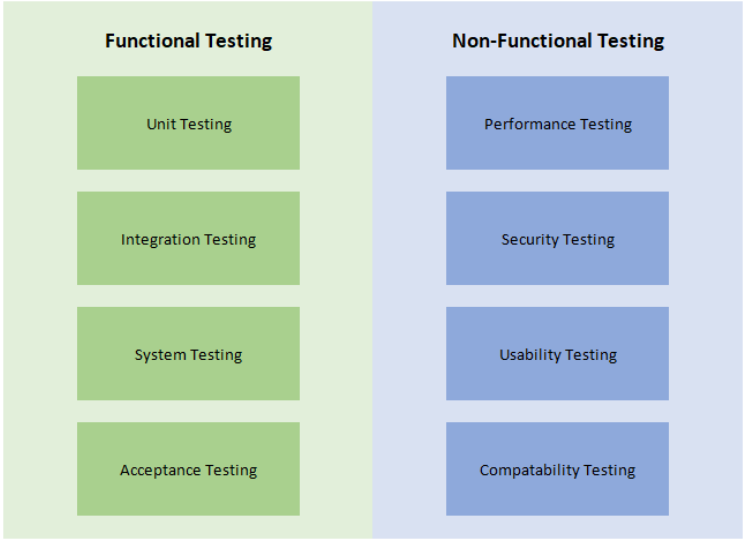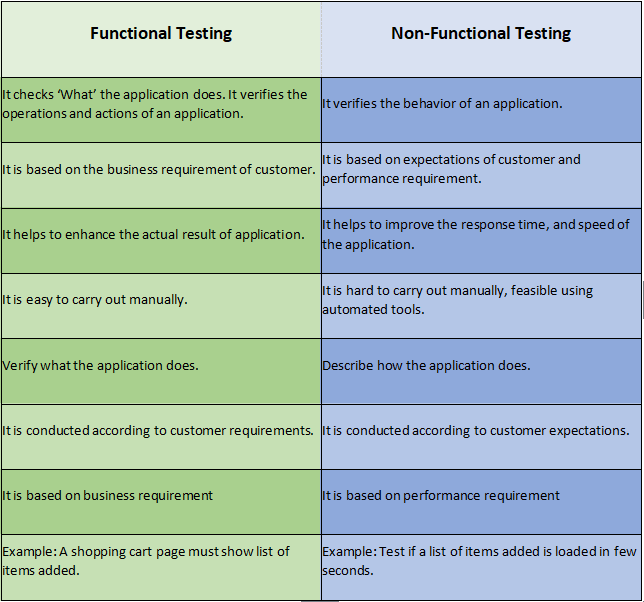Table of contents
1. What is Software Testing Methodology?
2. Functional Testing
3. Non-Functional Testing
4. Difference Between Functional Testing and Non-Functional Testing
5. Conclusion
1. What is Software Testing Methodology?
Software Testing Methodology is different strategies, types of testing, and approaches used to certify that the product meets the customer's purposes and expectations. Software testing methodology covers everything from front-end to back-end testing, from unit testing of individual modules, to testing of the entire system, and more. Each testing method has a test objective, inspection, test strategy, and deliverable. So, in this article, we learn about the testing techniques used by quality assurance professionals.
Nowadays, as software applications become more and more complex and need to be tested against a large number of different platforms and devices, it is more important than ever to have a method of robust testing to ensure that the software products/systems being developed have been ensured they meet the specified requirements and can operate successfully in all expected environments with the ability to use necessary apply and security.

2. Functional Testing
As the name implies, functional testing is testing the 'Function' of a piece of software or an application. Functional testing involves testing the application against the business requirements. It combines all types of testing designed to make sure each piece of piece of software works as expected based on customer requirements, a document known as software specification or requirements specification is used as a guide. These test methods are usually conducted in sequence and include:
+ Unit testing
+ Integration testing
+ System testing
+ Acceptance testing
3. Non-Functional Testing
Non-functional testing is a type of testing to check the non-functional aspects of a software application. Check if an application works according to user expectations, smoothly and efficiently under any conditions. There are several other aspects, such as the performance of an application, and this testing checks the quality of the software (time, accuracy, stability, correctness, and durability) in various adverse events. There are also criteria such as vulnerability, scalability, usability, etc.
Based on these aspects of quality, it is very important to test against these parameters. It is therefore explicitly designed to test the system's readiness according to non-functional parameters that cannot be resolved by functional testing. These include:
+ Performance testing
+ Security testing
+ Usability testing
+ Compatibility testing
4. Difference Between Functional Testing and Non-Functional Testing

5. Conclusion
Through defining as well as comparing the difference between functional and non-functional testing, hopefully, you will get a basic understanding of both the above methods.
You need to verify the functionality of your software product, applying both functional and non-functional testing techniques to ensure that it corresponds to the highest quality standards. Get references from professional QA companies that have experience in several types of testing. They will advise you on the best strategies and ensure that the quality of your application is outstanding.
SHIFT ASIA provides high-quality software development and software testing solutions to clients worldwide. For more details on our solutions, please visit the following link.




